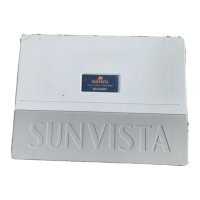
Do you have a question about the Sharp JH-3500U and is the answer not in the manual?
Provides essential safety guidelines for installation and operation, including warnings and cautions.
Explains how the conditioner detects grid abnormalities (voltage/frequency) and shuts down safely.
Describes the GFDI function for PV system protection, detecting ground currents over 1A.
Emphasizes reading all instructions, following codes (ANSI/NFPA70), and obtaining power company approval.
Specifies acceptable installation locations, avoiding high altitude, water, corrosive gas, direct sunlight, and poor airflow.
Confirms secure installation of PV module, DC/AC disconnects, and wiring completion.
Guides on wiring PV modules to the DC disconnect, emphasizing polarity and grounding.
Highlights safety warnings for certified installers, covering conduit use, PV array covering, and electrical safety.
Provides notes on cable types (copper conductor, nylon jacket, 90°C rating), sizes (AWG), and conduit openings.
Instructs to use AWG12 cables for DC input, connecting positive/negative pairs from PV strings.
Emphasizes confirming all DC cables are correctly and firmly connected to the solar power conditioner terminals.
Stresses confirming all AC cables are correctly connected, tightening screws for secure, long-lasting connections.
Lists important checks before testing, including secure connections, no short circuits, and tightened conduit hubs.
Guides on checking DC voltage from PV modules on a sunny day, including GFDI fuse removal and multimeter use.
Details checking AC voltage from the grid at the AC disconnect and AC terminal block, confirming values.
Outlines turning on DC switches, waiting, inserting GFDI fuse, turning on AC/DC disconnects, and starting operation.
Warns against opening the display cover except for authorized installers and performing changes during daylight.
Lists common display codes (F-01, D-47, STOP) and their respective troubleshooting steps.
Details checks for 'No Display' errors, including AC/DC terminal voltage and PV module conditions.
Explains countermeasures for 'E-23' error, involving power cycling and checking installation location.
